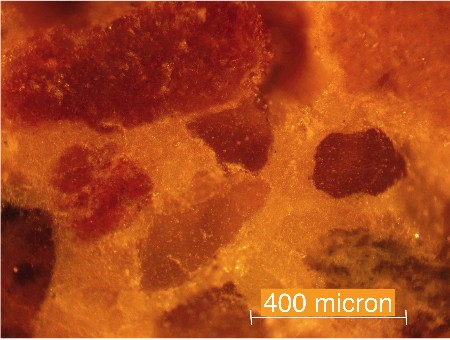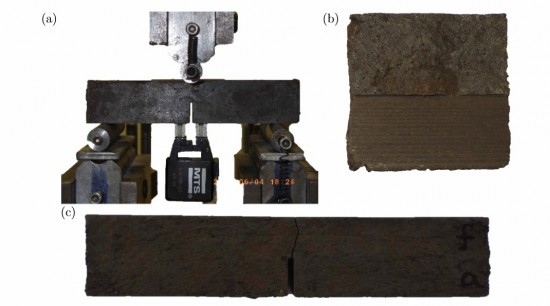January 6, 2015 – Researchers at Northwestern University’s Department of Civil and Environmental Engineering have analyzed the chemistry of Martian soil from rover data and have come up with a formula for making concrete. Most critical is the concrete can be formed without using water.
The key material: sulphur. When this idea was first explored for building habitations on the lunar surface it was quickly abandoned. In the presence of a vacuum (the lunar environment) sulphur sublimates. But on Mars, although the atmosphere is tenuous, there’s enough of it to allow sulphur to bind aggregated materiel from the surface to produce durable concrete as seen in the microscopic image below.
What is in the soil that the Northwestern team used?
Largely silicon and aluminum oxide with a dash of iron, titanium, magnesium, calcium, sodium, potassium, and manganese oxides plus a hint of diphosphorus pentoxide.
To this they add heated sulphur at a temperature of 240 degrees Celsius (464 Fahrenheit). At that temperature sulphur becomes liquid.
Combined and allowed to cool the end product forms a solid concrete. The researchers experimented with different sizes of aggregate particles and found using smaller aggregate subject to compression yields the best results. Martian concrete exceeds Earth-based concrete’s tensile strength by 2.5 times.
Here is the secret recipe:
- 50% sulfur
- 50% Martian soil
- Maximum aggregate size 1 millimeter
In the image below from their published paper you can see the results of one of the numerous tests done to determine the bendable and break characteristics of the end product.
One additional benefit. Concrete made from Martian soil using sulphur can be reheated to make the sulphur melt. Once you do this you can reshape and reuse the product. Try that with the stuff we produce here on Earth. Not possible!
Read the details of the research in the article, A Novel Material for In Situ Construction on Mars: Experiments and Numerical Simulations.
So all we have to do now is get there and start building with the stuff.

















